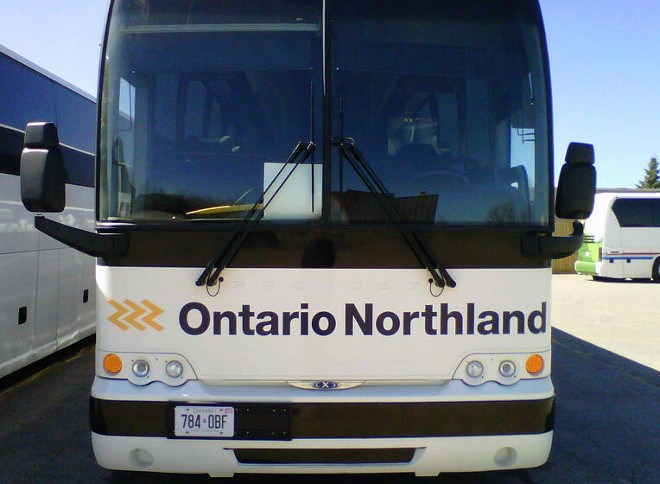Queen’s Park is pledging to do a better job of keeping Northerners connected by bus.
The province is spending $5.3 million to buy new coaches for Ontario Northland Transportation Commission (ONTC), is increasing the frequency of service between communities, and is introducing a grant program to fund new bus services.
Northern Development and Mines Minister Michael Gravelle and Transportation Minister Steven Del Duca made the announcement in Thunder Bay on Dec. 1.
The government said it will work with private carriers to bring new service to communities in northwestern Ontario and along the north of Lake Superior, namely in Hearst, Hornepayne, White River, Red Lake, Emo, Rainy River, Fort Frances, Atikokan and Red Rock.
The province is promising that return service will be offered five days a week between all communities serviced by the ONTC or private carriers.
“Ridership will be monitored regularly to ensure customer demand is met and service is expanded as needed,” said a government news release.
By the government’s count, more than 243,000 people boarded Ontario Northland buses in 2016-17. ONTC used the occasion to tweet that it is partnering with Kasper Transportation, a Thunder Bay carrier which runs a rapidly expanding mini-bus service in northwestern Ontario.
“Through collaboration with the ONTC, a reliable and effective transportation service will be made available to many Northern residents,” Kasper Wabinski, the company’s president, was quoted in a provincial news release.
A Community Transportation Grant Program also is being introduced with a pool of $30 million being made available over five years to fund local community and intercity bus service projects.
An additional $10 million will be set aside for Indigenous communities, organizations and not-for-profits.
Increasing the frequency and access to bus service, the government said, is in keeping with what’s outlined in the draft of its Northern Ontario Multimodal Transportation Strategy to make highway travel more convenient for seniors, students, the disabled and those who need to access essential services in other communities.
“Investing in service options through the ONTC and in collaboration with private carriers demonstrates the province’s commitment to increasing travel options in underserved areas,” said Gravelle in a news release.
“This funding will help more people in rural and remote areas get to and from their appointments, access important services and maintain an active and independent lifestyle,” added Del Duca.
The chair of citizen’s task force that studied declining bus service in northwestern Ontario called the announcement a “great day” for the region.
“Not only has the government followed our recommendations as to which communities should be served but they have also agreed with us that existing carriers should be partners in the endeavour to transport the residents of the northwest,” said Gary Woodbeck in a statement.
In 2015, Common Voice Northwest, a regional policy think-tank, published a policy paper entitled “The Future of Inter-Community Bus Service in Northwestern Ontario” that called on the province to institute and fund a plan to connect all of the communities in the northwest using existing carriers.
Cuts to Greyhound bus service had prompted the coalition of community and business leaders to craft the policy paper that detailed Queen’s Park providing an annual provincial subsidy of up to $3.5 million to support the region’s bus lines or provide travel vouchers for individual travellers.
“This announcement is a great example of how a small group of knowledgeable individuals can come together, do comprehensive research into a regional issue, offer a solution to government, then see it come to fruition,” said Woodbeck.
What still needs to be addressed, he said, is the issue of ticket prices for individual bus passengers.
“It is essential that the ticket price, regardless of the distance to be travelled, must be low enough to ensure the maximum number of users” said Woodbeck, “otherwise people will find other ways to travel, stay home or unfortunately move to one of the larger communities to access the services they need.”




